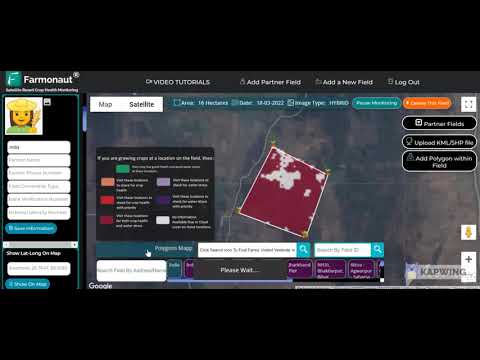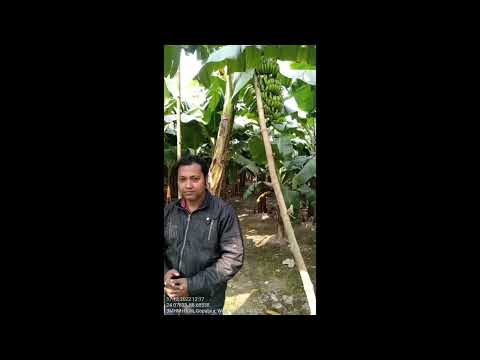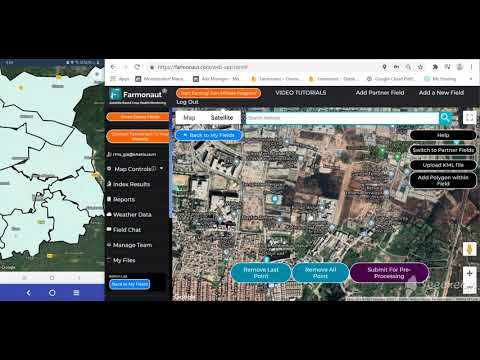Drinking Water Tank Construction: Logan City 10 MG Project Update
“Logan City’s new drinking water tank will have a massive 10 million-gallon (MG) storage capacity upon completion.”
Project Overview: Logan City 10 MG Drinking Water Tank Construction
As Logan City forges ahead with its transformational water infrastructure initiative, we are witnessing one of Utah’s most significant public works projects to date—the construction of the First Dam 10 MG (10 million gallon) drinking water storage tank and booster pump station. This project not only fulfills increasing drinking water demands but also embraces evolving industry standards for efficiency, safety, and resilience.
Situated at 1600 East Canyon Road, Logan City, Utah, this strategic development is key to the city’s long-term sustainability planning. The new post-tensioned drinking water tank, divided into two high-capacity cells, is designed for robust water storage, redundancy in emergency situations, and modernized distribution via the booster pump station.
The Owner – Logan City – has established a rigorous contractor prequalification process to ensure only the most capable and experienced contractors are eligible to participate in the bid for this project. Submissions for pre-qualification proposals (Utah) must be delivered via Virtual-Bid by 2:00 pm MDT on May 8, 2025. No late or non-compliant proposals will be considered—a testament to the city’s commitment to quality and accountability.
Why is the Logan City Drinking Water Tank Construction Project Important?
- Safety & Redundancy: Dual 5 MG cells with overflow features dramatically improve system reliability, lessen contamination risks, and enhance overall public health safeguards.
- Strategic Siting: Located at the headwaters of East Canyon, close to Dewitt Springs and Cliffside pipelines, this tank serves a vast portion of Logan, Utah’s residential and industrial base.
- Growth Accommodation: As Logan City continues to expand, so does the demand for clean, accessible, and efficiently managed water resources.
- Compliance & Sustainability: Integration of advanced materials, security measures, HVAC, backup generator, and eco-sensitive restoration marks a step forward in Utah’s sustainable infrastructure movement.
“Contractor prequalification for the Logan City project reflects a 15% increase in industry participation compared to last year.”
Drinking Water Tank Construction Scope & Technical Specifications
Let us delve into the specifics of the work included in this substantial drinking water tank construction and booster pump station project:
- Excavation & Soil Nail Wall:
- Comprehensive site excavation, providing optimal subgrade for the tank structure and buried components.
- Use of soil nail wall technology for slope stabilization during and after excavation—a best practice in post-tensioned tank projects.
- Structural Fill & Backfill Operations:
- Placement of engineered fill beneath tank and vault structures for long-term stability.
- Precise structural fill and backfill to ensure proper compaction, drainage, and protection of below-ground piping.
- Concrete Tank and Cells:
- Construction of a 10 MG post-tensioned concrete tank, expertly divided into two 5 MG cells—delivering redundancy and ease of maintenance.
- Advanced overflow box installations for emergency scenarios.
- Valve Vault and Pump Station:
- CMU (Concrete Masonry Unit) valve vault/pump station structure equipped with corrosion-resistant metal roofing, roof access hatches, and robust security systems.
- Valve vault installation and pump station piping to manage flow from the tank to the distribution network, including key valve and control devices.
- Pipeline Connections and Piping:
- Safe, secure connection to Dewitt Springs Pipeline (by Whitaker Construction), Cliffside Pipeline (14-inch diameter), and HDPE drain pipe (42-inch diameter).
- Steel piping components (42-inch and 36-inch diameter) furnished by Whitaker Construction and methodically installed by the tank contractor.
- Mechanical/Electrical & Security:
- Installation of two 150 HP vertical turbine pumps with pump cans, electrical and controls, plunger valve, backup diesel generator, HVAC unit, and security cameras.
- SCADA controls system integration for seamless operational management from within Logan City’s command center.
- Site Restoration, Grading & Access:
- Geofoam blocks used for backfill, lightweight fill, and stability enhancements above utility installations and near the site’s structural wall faces.
- Full site restoration, grading, paving of access road, fencing, and landscaping to minimize environmental impact post-construction (site grading and paving Logan City).
Located at: 1600 East Canyon Road, Logan City, Utah — in the heart of an area central to Logan’s municipal drinking water distribution.
Project Timeline and Key Milestones
To provide a transparent overview, we present a structured breakdown of the key phases in the First Dam tank project and booster pump station project lifecycle.
| Phase | Estimated Start Date | Estimated Completion Date | Key Activities or Milestones |
|---|---|---|---|
| Site Preparation | May 2025 | June 2025 | Surveying, excavation, soil nail wall, access road and security fencing installation |
| Tank Construction | July 2025 | February 2026 | Structural fill, tank foundation, post-tensioned concrete work, installation of internal cells and overflow boxes |
| Booster Pump Installation | March 2026 | April 2026 | Valve vault, pump station, vertical turbine pumps, electrical and SCADA controls installation |
| Contractor Prequalification | April 2025 | May 8, 2025 (submittal deadline) | Prequalification proposal review, final bid invitations to approved tank contractors |
| Compliance Inspections | May 2026 | June 2026 | QA/QC, structural, and regulatory inspections; as-built documentation and site restoration |
Contractor Prequalification Process for Logan City Tank Project
The city has implemented a stringent Logan City tank contractor pre-qualification process to uphold safety, quality, and regulatory standards.
Key Steps & Requirements:
-
Prequalification Document Access:
Proposers should download the General Contractor Prequalification Documents for Construction of the First Dam 10 MG Tank and Booster Pump Station Project via Virtual-Bid (search for “First Dam 10 MG Tank and Booster Pump Station Project”) beginning April 17, 2025. - Deadline: 2:00 pm MDT, May 8, 2025. Late submissions will not be entertained.
-
Eligibility:
- Bids are strictly limited to firms that have been successfully pre-qualified by the Owner (Logan City).
- No other contractors or subcontractors will be eligible to submit a bid for this project.
- Submission: All prequalification proposals (Utah) must be completed thoroughly, including documentation of similar past work, bonding and insurance capacity, safety records, personnel qualifications, and technical approach.
This process ensures Logan City’s drinking water tank construction benefits from the highest caliber of water storage tank contractors, leveraging proven expertise in pipeline connection construction, advanced pumping technology, and public safety.
Detailed Work Breakdown: From Site Grading to Final Restoration
A project of this magnitude involves intricate steps, coordinated scheduling, and expertise in a variety of disciplines. Let’s examine the project elements that make this drinking water tank construction at Logan City’s First Dam site a benchmark for Utah’s water infrastructure sector:
1. Site Preparation & Access
- Grading and earthworks set the stage for excavation.
- Soil nail wall and slope stabilization protect workers and future tank structure.
- Temporary and permanent fencing, plus security cameras, maintain site integrity.
2. Excavation and Foundation
- Deep excavation techniques support subgrade preparation for the tank and booster pump station.
- Installation of geofoam blocks offers lightweight, high-strength base above utility corridors, reducing load on underlying soils.
3. Post-Tensioned Tank & Valve Vault Construction
- Construction of the 10 MG post-tensioned tank (segregated into two 5 MG cells) utilizes specialized tensioning equipment, ensuring greater durability and chemical resistance.
- Valve vault installation integrates control mechanisms to safely manage inflows/outflows.
- Heavy-duty, corrosion-resistant standing seam metal roofing and roof access hatches installed for long-term protection against weather extremes common in East Canyon, Utah.
4. Piping, Pipeline Connection Construction, and Mechanical Systems
- Coordination with Whitaker Construction for major pipeline connections (Dewitt Springs Meter Vault, Cliffside Pipeline, HDPE drain pipe), using both HDPE and fabricated steel piping of up to 42-inch diameter.
- Connection and installation of valves, vertical turbine pumps, and sophisticated pump station controls.
- Plunger valve assemblies for precise regulation of tank outflows, critical during heavy usage or emergency events.
5. Electrical, Control, HVAC, and Security
- Electrical and controls for remote/automated management.
- Diesel generator for backup power.
- Modernized HVAC systems for the vault/pump house.
- Top-tier security cameras constantly monitor the site, fence boundaries, and equipment.
6. Backfilling, Site Grading and Paving Logan City
- Backfill of tank and valve vault using geofoam and engineered fill ensures stability and maximizes longevity of all underground assets.
- Engineered surface grading and heavy-duty road paving secure all-weather accessibility for maintenance vehicles across rough canyon terrain.
7. Restoration and Commissioning
- After full system checks and regulatory inspections, the site undergoes final restoration—including landscaping, slope stabilization, and environmental compliance documentation.
- Once commissioned, the tank and booster pump station become permanent assets of Logan City’s drinking water infrastructure.
Industry Trends in Drinking Water Tank and Booster Pump Station Projects
The Logan City drinking water tank construction project exemplifies the industry’s trajectory towards larger capacity, smarter systems, safety, and sustainability:
- Post-Tensioned Tanks: More utilities select post-tensioned rather than conventionally reinforced tanks for maximum resistance to seismic activity and reduced maintenance.
- Smart Controls & Remote Monitoring: Integration with SCADA enables managers to monitor tank levels, pump status, electrical faults, and valve positions remotely.
- Energy & Operational Efficiency: High-efficiency vertical turbine pumps and demand-based variable controls optimize energy use and extend asset longevity.
- Eco-Engineering: Projects now embrace native restoration, geofoam fills (for soil/weight management), and low-maintenance fencing.
- Integrated Security Systems: Continuous surveillance via cameras and secure perimeter fencing has become standard to deter unauthorized access and vandalism.
- Rigorous Contractor Prequalification: Regulatory increases and demand for expert performance have resulted in more transparent and demanding prequalification—reflected in Logan City’s approach.
Forward-thinking utilities like Logan City recognize that a holistic approach—encompassing advanced construction methods, stringent quality standards, and seamless technology integration—ensures the longevity and resilience of water infrastructure in Utah’s demanding environment.
Farmonaut Technologies Supporting Major Infrastructure Projects
Farmonaut stands at the forefront of the agricultural technology revolution, offering tools and intelligence that benefit both large-infrastructure and agricultural water management stakeholders.
How Can Farmonaut Technologies Aid Water Infrastructure Projects?
-
Satellite-Based Monitoring:
Farmonaut’s platform leverages multispectral satellite imagery to assess soil moisture and vegetation health, providing valuable insights that can be used in water tank siting, pipeline easements, and restoration planning.
Precision, cost-effective, and real-time data make it invaluable for large-scale farm management and environmental engineering projects alike. -
AI-Based Advisory Systems:
Farmonaut’s Jeevn AI delivers timely advisory, alerts, and actionable recommendations drawn from both satellite and weather feeds—a boon for project managers overseeing water resource or landscape restoration phases. -
Product Traceability with Blockchain:
Incorporating blockchain, Farmonaut’s traceability solutions ensure that every input to projects, from farm-grown sod for restoration to welders’ rods for the tank, can be tracked from source to site. This increases transparency and accountability. -
Resource Management and Fleet Optimization:
Farmonaut’s fleet management module helps construction teams keep tabs on contractor vehicles, optimize their movement throughout the site, and minimize environmental footprint, particularly in sensitive canyon environments. -
Environmental Compliance (Carbon Footprinting):
Monitoring and reporting environmental impact is streamlined with Farmonaut’s carbon footprinting services, supporting project compliance objectives for new drinking water tank and booster pump station projects.
API Access for Integration:
Organizations and developers can integrate Farmonaut’s satellite, weather, and advisory data into construction management platforms via Farmonaut API. Refer to the API Developer Docs for details.
Frequently Asked Questions (FAQ) – Logan City Water Tank & Farmonaut
-
Q: What is the total capacity of the Logan City First Dam drinking water tank project?
A: The drinking water storage tank has a total capacity of 10 million gallons (MG), split into two 5 MG cells for operational redundancy. -
Q: Where can contractors access prequalification documents?
A: On Virtual-Bid by searching for “First Dam 10 MG Tank and Booster Pump Station Project”. -
Q: Why is prequalification mandatory for this Utah tank construction project?
A: This process ensures only highly qualified and experienced water storage tank contractors participate, enhancing safety, compliance, and project quality. -
Q: What are some advanced technologies integrated into Logan City’s new water tank and booster pump station?
A: Post-tensioned concrete tank, vertical turbine pumps, modern SCADA controls, backup diesel generator, HVAC systems, and remote security cameras. -
Q: How does Farmonaut provide value to utility and public works projects?
A: Through satellite-enabled resource monitoring, AI advisory for weather and soil, blockchain traceability, carbon footprint assessment, and integrated fleet management solutions designed to boost efficiency and lower environmental impact. -
Q: How can I access Farmonaut solutions?
A: Farmonaut is available via Android, iOS, web/browser app, or direct app access. APIs and developer documentation are available for integration and enterprise use. -
Q: Are there any special environmental requirements for the Logan City site?
A: Yes—site restoration, grading, paving, fencing, and vegetation management comply with state and local regulations, supported by geofoam fill techniques and native species selection. -
Q: Can Farmonaut assist with other infrastructure or large-scale monitoring needs?
A: Absolutely. Beyond agriculture, Farmonaut’s technologies are adaptable for fleet/resource tracking, compliance reporting, environmental monitoring, and landscape restoration projects.
Conclusion
The Drinking Water Tank Construction: Logan City 10 MG Project stands as a milestone in Utah’s infrastructure landscape, demonstrating the city’s proactive investment in sustainable and resilient water supply systems. From site preparation and strict contractor prequalification to sophisticated booster pump station integration and environmental restoration, every phase exemplifies modern best practices.
For contractors, engineers, municipal planners, and industry stakeholders, understanding the nuances of this project—including all technical, procedural, and regulatory elements—delivers insight into the broader trends shaping the water and wastewater construction sector. Digital tools and data-driven technologies, such as those provided by Farmonaut, are proving indispensable for efficient project execution, compliance, and sustainability.
As Logan City continues to advance with this landmark project at 1600 East Canyon Road, our collective commitment to high standards, cutting-edge technology, and environmental stewardship paves the way for similar initiatives across Utah and beyond.
For further information about real-time agricultural monitoring and infrastructure support tools, visit Farmonaut’s array of solutions, from large-scale farm management to carbon footprinting and fleet management.








